Dominique Luchart's Blog, page 569
July 13, 2021
YouTube’s TikTok competitor YouTube Shorts is rolling out globally, Jon Porter

YouTube’s TikTok competitor, YouTube Shorts, is now rolling out globally. The service launched first in India last year, before expanding to around 26 countries including the US and the UK. Now YouTube Shorts, which is still in beta, will be available “across more than 100 countries around the world where YouTube is available.”
YouTube Shorts is playing catchup to TikTok as the short-form video platform of choice, but Google’s service is pushing Shorts’ integration with the wider YouTube ecosystem as a key selling point. It recently added the ability for Shorts creators to sample audio from YouTube videos, and says it’s exploring ways to offer quick links from Shorts to YouTube videos they’ve taken samples from.
Ironically, while YouTube is going to great lengths to emulate TikTok’s format, TikTok is experimenting with formats that are closer to YouTube’s traditional focus. It recently tripled its maximum video length to three minutes for everyone, and has been slowly rolling out apps on TV platforms like Android TV and Fire TV.
The post YouTube’s TikTok competitor YouTube Shorts is rolling out globally, Jon Porter appeared first on NEWDAWN Blog.
PC market growth slows amid global chip shortages, Tom Warren
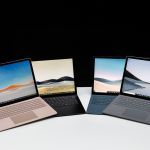
The PC market is showing early signs of its growth slowing down, after an impressive run of shipments throughout 2020. Both IDC and Gartner conclude that growth in the second quarter of PC shipments has slowed this year. Demand for new PCs is still above what we saw before the pandemic hit, but a mixture of softer demand and the effects of the global chip shortage mean it’s not growing as quickly.
“The market faces mixed signals as far as demand is concerned,” says Neha Mahajan, a senior research analyst at IDC. “With businesses opening back up, demand potential in the commercial segment appears promising. However, there are also early indicators of consumer demand slowing down as people shift spending priorities after nearly a year of aggressive PC buying.”
IDC says more than 83 million PCs were shipped in the second quarter of 2021, while Gartner’s own figure is more than 71 million. Gartner does not include Chromebook shipments in its results, but the research firm says “Chromebook shipments were once again strong in the second quarter of 2021.” Either way, both firms agree that year-over-year growth in this latest quarter wasn’t as strong as 2020’s sudden growth.
That doesn’t mean PC sales are about to suddenly plummet, but the first big growth we saw in a decade could be starting to wane. Lenovo is still the top PC manufacturer worldwide, and Gartner says Apple, Acer, and Asus all grew faster than the overall market thanks to better availability of consumer PCs. “The consumer PC market was less impacted by shortages than the enterprise market, as vendors can be more flexible in the system design of consumer models, enabling workarounds for certain supply constraints,” says Gartner.
While there are clearly early signs of slowing growth in the PC market, Microsoft and its OEM partners will be hoping to revitalize PCs even further later this year. Windows 11 will likely arrive in October, and Microsoft’s minimum hardware requirements mean many will need to upgrade PCs. A new version of Windows always comes with big marketing campaigns, and Windows 11 will be no different. With Apple’s impressive M1 MacBooks and Intel reviving the Mac vs. PC ads, this year is bound to be an interesting period for the PC market.
The post PC market growth slows amid global chip shortages, Tom Warren appeared first on NEWDAWN Blog.
Twitter admits it verified several fake accounts, Jon Porter

Twitter says it has permanently suspended a “small number” of fake accounts it mistakenly verified just weeks after re-launching its public verification program, the Daily Dot reports. The blunder came to light after data scientist Conspirador Norteno discovered six verified accounts which had been created recently on June 16th. None of them had posted a single tweet, and two used what appeared to be stock photographs for profile pictures.
“We mistakenly approved the verification applications of a small number of inauthentic (fake) accounts,” Twitter told the Daily Dot in a statement. “We have now permanently suspended the accounts in question, and removed their verified badge, under our platform manipulation and spam policy.”
Meet @aykacmis, @degismece, @anlamislar, @aykacti, @kayitlii, and @donmedim, a sextet of blue-check verified Twitter accounts created on June 16th, 2021. None has yet tweeted and all have roughly 1000 followers (and mostly the *same* followers).
cc: @ZellaQuixote pic.twitter.com/V82Wtu0SNr
— Conspirador Norteno (@conspirator0)
The incident suggests that Twitter’s verification process is having problems, and not catching the kinds of obviously inauthentic accounts that shouldn’t be worthy of the platform’s coveted blue badge. Twitter recently relaunched public verification applications with a revamped set of eligibility criteria based around the idea that an account should be “authentic, notable, and active” to be worthy of verification. Clearly, the accounts identified were none of these.
As Norteno explains in a Twitter thread, the six accounts had 976 suspicious followers in common — all created between June 19th and June 20th — and large numbers of these were using AI-generated profile pictures. In total, Norteno says they were part of a botnet consisting of at least 1212 accounts.
These 976 accounts are part of an astroturf botnet consisting of (at least) 1212 accounts. The network is split into followers, which follow the aforementioned verified accounts as well as other members of the botnet, and followees, which are followed by the other bots. pic.twitter.com/wKKfC2PRX8
— Conspirador Norteno (@conspirator0)
As of this writing, Twitter has suspended five out of the six verified accounts, while the sixth appears to have deactivated its own profile. The “majority” of the supporting botnet has also been taken down, Norteno says. But the incident raises questions about how the accounts were able to get verified in the first place, and why Twitter’s processes didn’t flag them before they were discovered by a third-party researcher.
The post Twitter admits it verified several fake accounts, Jon Porter appeared first on NEWDAWN Blog.
The Super Mario and Tag Heuer collaboration is a $2,150 Wear OS watch, Sam Byford
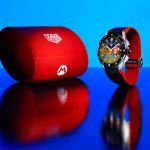
A few days ago, Tag Heuer posted a teaser for a Super Mario-themed watch. You might have assumed that a Swiss-made mechanical timepiece was in the works, but now the news is out: it’s actually a limited edition version of Tag’s Connected Wear OS smartwatch.
Tag Heuer seemingly hasn’t released details itself yet — its website is still counting down to a July 15th announcement — but Engadget, TechCrunch, and WorldTempus have all posted stories with the device’s key features. The hardware itself appears to be identical beyond some light cosmetic tweaks to the 45mm case, including an M-for-Mario logo on the crown, and it comes with two straps: one with perforated red rubber alongside one with red rubber and black leather.
The watch is said to use a “gamification rewards system” with greetings from Mario and Mushroom Kingdom-themed animations that play as you hit various steps goals throughout the day. There are four new Mario watch faces, including a “Timekeeping” face that features “retro elements from the 1985 version of Super Mario Bros. with Mario, all in pixels.” (As opposed to the physical steel that other smartwatch faces are cast from, presumably.)
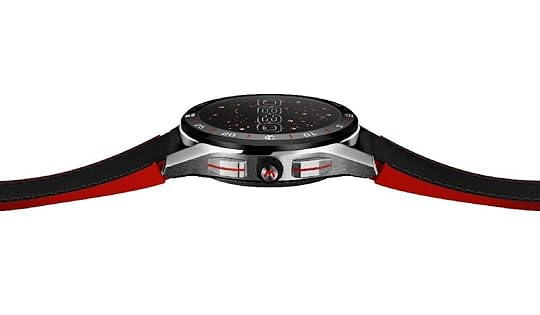
Tag Heuer says it’s “considering making [these Mario features] available on other editions of TAG Heuer Connected at a later stage.” That may be good news for anyone who bought the most recent version, which started at $1,800 and could cost as much as $2,350.
The new Mario watch falls toward the high end of the Connected range, coming in at $2,150. It’s also a lot more exclusive — Tag Heuer is only making 2,000 models, which will be available through some of its own boutique stores and its website in certain regions from July 15th.

The post The Super Mario and Tag Heuer collaboration is a $2,150 Wear OS watch, Sam Byford appeared first on NEWDAWN Blog.
July 12, 2021
With Virgin Galactic’s launch of Richard Branson in the books, all eyes are on Blue Origin and Jeff Bezos, ,
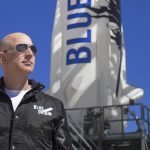
Next billionaire up!
Richard Branson completed his much-anticipated mission on Sunday (July 11), riding to suborbital space and back on the first fully crewed flight of Virgin Galactic’s VSS Unity space plane.
But that was just the first of two planned billionaire space jaunts this month. Blue Origin boss Jeff Bezos is scheduled to fly to the suborbital frontier on his company’s New Shepard craft on July 20, the 52nd anniversary of the Apollo 11 moon landing. It will be the first crewed spaceflight for New Shepard, which consists of a reusable rocket-capsule combo.
Related: ‘Welcome to the dawn of a new space age,’ Branson says after launch
Blue Origin announced the July 20 target in early May, also revealing then that the company would auction off a seat aboard the landmark mission. The company unveiled further details at a deliberate, intrigue-building pace. In early June, for example, Blue Origin announced that Bezos will fly on the mission, along with his brother Mark — news that surely juiced the bidding for the open seat, which eventually sold for $28 million. (We still don’t know who bought that seat; the person’s identity will presumably be revealed closer to the launch date.)
Then, on July 1, Blue Origin announced that the fourth and final person flying on the July 20 mission will be pioneering aviator Wally Funk. The 82-year-old Funk was one of the famous “Mercury 13,” a group of women who, in the early days of the space age, passed the same physiological screening tests that NASA put its astronauts through.
The tests the Mercury 13 endured were part of a private, non-NASA program. The agency didn’t seriously consider accepting female astronauts back then; NASA wouldn’t launch a woman to space until Sally Ride went up on the space shuttle Challenger’s STS-7 mission in 1983.
So it’s some long-overdue justice that Funk will finally reach space this month, 60 years after she showed that she has the right stuff. And she’ll break a record in the process, becoming the oldest person ever to reach the final frontier. (That mark is currently held by John Glenn, who was 77 when he went up on the STS-95 mission of the space shuttle Discovery in October 1998.)
Virgin Galactic announced that it planned to launch VSS Unity’s fourth spaceflight, and that Branson would be aboard, on July 1 — the same day we learned that Funk would fly on New Shepard. Branson and Virgin Galactic stressed that Unity would fly on July 11 simply because it was ready to do so, and that they weren’t trying to beat Bezos to space. But it’s hard to imagine that Blue Origin and its chief weren’t at least a little miffed that their thunder was stolen.
For example, Blue Origin recently reminded folks that New Shepard gets above the Karman line, the 62-mile-high (100 kilometers) mark that is often regarded as the boundary of space — and that VSS Unity doesn’t quite get there.
“From the beginning, New Shepard was designed to fly above the Karman line so none of our astronauts have an asterisk next to their name. For 96% of the world’s population, space begins 100 km up at the internationally recognized Karman line,” Blue Origin wrote via Twitter on Friday (July 9).
“Only 4% of the world recognizes a lower limit of 80 km or 50 miles as the beginning of space. New Shepard flies above both boundaries. One of the many benefits of flying with Blue Origin,” the company added in another tweet.
A post shared by Jeff Bezos (@jeffbezos)
A photo posted by on
(For what it’s worth, NASA, the U.S. military and the U.S. Federal Aviation Administration award astronaut wings to anyone who gets at least 50 miles up. And some researchers believe that 50 miles is actually the right place to put the Karman line, which represents the spot where the forces of orbital dynamics become dominant over those of aerodynamics.)
Maybe there’s no snark behind those two tweets; after all, highlighting the perceived advantages of your spaceflight system over that of your chief competitor makes good business sense. Regardless, Blue Origin soon struck a more conciliatory tone, wishing Virgin Galactic a safe flight and congratulating the company after VSS Unity touched down.
And Bezos gave his own shout-out Sunday via Instagram: “@richardbranson and crew, congratulations on the flight. Can’t wait to join the club!”
In eight short days, that wait will be over.
Mike Wall is the author of “ Out There ” (Grand Central Publishing, 2018; illustrated by Karl Tate), a book about the search for alien life. Follow him on Twitter @michaeldwall. Follow us on Twitter @Spacedotcom or Facebook.
The post With Virgin Galactic’s launch of Richard Branson in the books, all eyes are on Blue Origin and Jeff Bezos, , appeared first on NEWDAWN Blog.
Elon Musk unveils SpaceX’s newest drone ship for rocket landings at sea, ,

The drone fleet used by SpaceX to catch falling rockets now has a third autonomous ship, whimsically called “A Shortfall of Gravitas.”
Founder Elon Musk unveiled the newest floating rocket landing pad on Twitter Friday (July 9) along with a dramatic video from a flying drone circling the ship.
“Autonomous SpaceX droneship, A Shortfall of Gravitas,” Musk wrote succinctly in the post. The drone ship is fully automated with no tugboat required to take it out into the Atlantic Ocean nearby SpaceX’s typical launch site at the Kennedy Space Center in Florida, he added in another tweet.
Related: The evolution of SpaceX rockets in pictures
[image error]
SpaceX’s newest drone ship, A Shortfall of Gravitas, is headed to Florida to catch Falcon 9 rocket boosters at sea. (Image credit: SpaceX via Elon Musk/Twitter)The new ship will be put in place in Florida to support Atlantic launches of Falcon Heavy and the flagship rocket of SpaceX, the Falcon 9, that regularly sends Starlink broadband satellites to orbit and NASA astronauts and cargo to the International Space Station, among other customer requests.
SpaceX’s next expected launches are a Starlink set sometime in July from Vandenberg Space Force Base in California, and the CRS-23 ISS cargo mission from the Kennedy Space Center in Florida on Aug. 18, according to SpaceflightNow’s worldwide launch calendar.
“A Shortfall of Gravitas” (ASOG) will replace the role of the long-running “Of Course I Still Love You” drone ship, which has supported Atlantic launches since 2015. This month, it was switched to the Pacific Coast in a month-long journey beginning June 10. SpaceX is ramping up launches of its Starlink satellites in California, requiring more drone ship support to catch the reusable stages of its rockets.
[image error]
A closer view of the landing pad on SpaceX’s A Shortfall of Gravitas drone ship. (Image credit: SpaceX via Elon Musk/Twitter)Meanwhile, ASOG will work in the Atlantic alongside SpaceX’s other droneship, “Just Read the Instructions” (JRTI), which moved to Port Canaveral from the Port of Los Angeles in 2019. It appears the droneships may work together to catch reusable side boosters from forthcoming launches, if a Twitter conversation in 2018 still holds water, so to speak. Back then, Musk said a third droneship was under construction.
Like the other two droneships, ASOG is named in honor of work from the late science fiction author Iain M. Banks. The newest ship’s namesake is the fictional spaceship “Experiencing A Significant Gravitas Shortfall,” while the other two ships are also .
ASOG’s arrival also comes as SpaceX is ramping up work on its Starship prototype series that is meant to test out a spaceship that could one day be used as the backbone of a Mars settlement scheme by the California company. SpaceX hopes to do an orbital test of Starship soon, and was targeting July, but it is waiting on certification from the Federal Aviation Administration in a process that typically takes months at the least. Starship launches from nearby the village of Boca Chica, Texas.
Follow Elizabeth Howell on Twitter @howellspace. Follow us on Twitter @Spacedotcom and on Facebook.
Join our Space Forums to keep talking space on the latest missions, night sky and more! And if you have a news tip, correction or comment, let us know at: community@space.com.
The post Elon Musk unveils SpaceX’s newest drone ship for rocket landings at sea, , appeared first on NEWDAWN Blog.
South African telescope captures stunning image of radio galaxy, ,
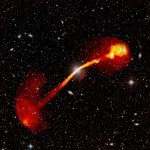
A stunning new image from the South African MeerKAT telescope captures powerful radio emissions woven through space.
The radio emissions emanate from an enormous rotating black hole that lies at the center of an elliptical galaxy known as IC 4296. Energy released by matter falling into the black hole generates two radio jets of high energy gas on opposite sides of the galaxy — creating what is also known as a double-lobed radio galaxy.
Using the South African Radio Astronomy Observatory’s (SARAO) MeerKAT telescope, located in the southwest Karoo region of the country, researchers detected the radio waves from IC 4296, along with other unique cosmic features that may reveal new clues about large radio galaxies, according to a statement from the SARAO.
Related: 10 huge black hole findings from 2020
Recent observations of IC 4296 revealed that the radio jets become unstable as they travel beyond the outer reaches of the galaxy, allowing some of the charged electrons to escape into intergalactic space. These stray electrons create several faint radio “threads,” which appear below the galaxy in the new image.
The MeerKAT radio data — represented by the red-orange colored gas in the composite image — also captures smooth “ribbons” between the bright emission jets and outer lobes located on either side of the galaxy. The radio lobes are caused by the interaction of a jet with its surrounding medium. The ribbons fill channels that the jets have carved into the surrounding gas. Nearly 1 million light-years from IC 4296, the ribbons are met by intergalactic gas, creating “smoke rings” in the radio lobes, according to the statement.
“Only MeerKAT’s unique combination of sensitivity, angular resolution and dynamic range allowed the discovery of these threads, ribbons and rings,” Jim Condon, lead author of the study from the U.S. National Radio Astronomy Observatory, said in the statement.
The intergalactic threads, ribbons and rings captured in the recent MeerKAT radio data represent a never-before-seen combination of cosmic features, according to the SARAO statement.
[image error]
STEREO-A’s view of the inner solar system between May 25 and June 1, 2020. Comet ATLAS streaks down across the screen as the planet Mercury enters at the left of the frame; meanwhile, the solar wind blows out from the sun on the left. (Image credit: NASA/NRL/STEREO/Karl Battams)“Only MeerKAT’s unique combination of sensitivity, angular resolution and dynamic range allowed the discovery of these threads, ribbons and rings,” Jim Condon, lead author of the study from the U.S. National Radio Astronomy Observatory, said in the statement.
The intergalactic threads, ribbons and rings captured in the recent MeerKAT radio data represent a never-before-seen combination of cosmic features, according to the SARAO statement.
The South African MeerKAT radio telescope, which saw first light in 2018, is a precursor to Square Kilometre Array (SKA), which aims to answer fundamental astrophysical questions about the nature of objects in the universe with dishes scattered across South Africa and Australia.
“It is clear that new results like this from MeerKAT and other SKA pathfinders are set to overhaul our understanding of extragalactic radio sources,” according to the statement.
The recent findings have been accepted for publication in The Astrophysical Journal.
Follow Samantha Mathewson @Sam_Ashley13. Follow us on Twitter @Spacedotcom and on Facebook.
Join our Space Forums to keep talking space on the latest missions, night sky and more! And if you have a news tip, correction or comment, let us know at: community@space.com.
The post South African telescope captures stunning image of radio galaxy, , appeared first on NEWDAWN Blog.
14 years of solar eclipse chasing (and counting): a team travels the world to study solar wind, ,
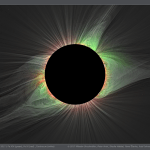
The solar system is constantly bathed by a sea of charged particles that emanate from the sun, and one research team spent 14 years chasing solar eclipses to learn more about this stellar spray.
The particles are known as solar wind, and they come from the sun’s outermost region: the corona. If a person is lucky enough to observe a total solar eclipse, they will definitely see this pearly-looking region surrounding the sun. This wispy area has all the visual charm of a cosmic halo, but it is equal parts inferno. The corona is the hottest region of the sun, reaching temperatures upwards of 2 million degrees Fahrenheit (more than 1 million degrees Celsius). The extreme temperature found in this gaseous stellar cocoon has puzzled scientists because this is quite a different story to what is happening 1,000 miles (1,600 kilometers) below the corona, where the temperature is a significantly cooler 10,000 degrees F (5,500 degrees C), according to NASA.
Scientists want to understand the solar wind for many reasons. Solar wind defines the parameters of the solar system and sets its boundary: As the solar wind spreads itself thinner and thinner the farther it travels away from the sun, the particles can’t resist the pushback from interstellar space. Much closer to Earth, solar wind protects us from dangerous cosmic radiation but can also disrupt space-based communication satellites and GPS systems.
Related: Solar Orbiter captures its 1st video of eruption on the sun
Shaddia Habbal, a solar researcher at the University of Hawaii, led a team to Oregon, Indonesia, Argentina, the Sahara Desert in Libya, the Gobi Desert in Mongolia, and many more solar-eclipse sites over the last 14 years. Her goal was to observe the sun’s corona over a slightly longer amount of time than it takes the sun to complete one cycle of solar activity, about 11 years. Total solar eclipses, which happen as the moon’s disk blocks all sunlight except the corona, are a key opportunity for researchers to observe the source of the solar wind from Earth.
The team took high-resolution observations of 11 total solar eclipses using cameras equipped with specialized filters. This gear allowed the scientists to measure the temperatures of the particles from the innermost part of the corona, which is the birthplace of the solar wind. The researchers then compared their findings with data from NASA’s Advanced Composition Explorer (ACE) mission, which launched in 1997 and observes the solar wind from a place in space located about 1/100 the distance from Earth to the sun.
During the sun’s 11-year cycle, the star oscillates between dormant and volatile periods. When the sun is quiet, the face of the star sports few solar spots. That’s quite different than during the sun’s volatile season, when blemishes and solar flares are commonplace.
Related: What’s inside the sun? A star tour from the inside out
[image error]
STEREO-A’s view of the inner solar system between May 25 and June 1, 2020. Comet ATLAS streaks down across the screen as the planet Mercury enters at the left of the frame; meanwhile, the solar wind blows out from the sun on the left. (Image credit: NASA/NRL/STEREO/Karl Battams)The sun’s radically different appearance over the course of the solar cycle left these scientists surprised to find that, despite all the global solar changes that happen over the course of 11 years, their 14 years of observations showed no major temperature change for the inner-corona particles, which create the solar wind.
“Whatever is heating the majority of the corona and solar wind is not very dependent on the sun’s activity cycle,” Benjamin Boe, a solar researcher at the University of Hawaii involved in the new research, said in a NASA statement that describes the study.
“The temperature at the sources of the solar wind in the corona is almost constant throughout a solar cycle,” Habbal said in the statement. “This finding is unexpected because coronal structures are driven by changes in the distribution of magnetized plasmas in the corona, which vary so much throughout the 11-year magnetic solar cycle.”
To solve this new mystery, researchers plan to continue chasing total solar eclipses in the future to gain more observations, according to NASA. The next total solar eclipse will occur in December over Antarctica.
Follow Doris Elin Urrutia on Twitter @salazar_elin. Follow us on Twitter @Spacedotcom and on Facebook.
The post 14 years of solar eclipse chasing (and counting): a team travels the world to study solar wind, , appeared first on NEWDAWN Blog.
Redesigned iPad mini reportedly on track to launch this fall, Jon Porter

Apple plans to release a new iPad mini featuring “the biggest redesign in [its] nine-year history” this fall, Bloomberg’s Mark Gurman reports (via 9to5Mac). The new device is expected to feature slimmer bezels, a larger display, faster performance, and a design similar to Apple’s new iPad Air from last year, MacRumors notes. It could be a big shakeup for Apple’s smallest tablet, whose design has remained remarkably consistent since its debut in 2012.
The news tallies with Bloomberg‘s previous reporting about the upcoming device, which it said last month could ditch the home button to allow for narrower screen bezels. Reports of an iPad Air-style design suggests it could use a Touch ID sensor built into a side-mounted power button. Last year, analyst Ming-Chi Kuo predicted that Apple’s next iPad mini could have a screen that’s 8.5 to 9-inches in size, up from the 7.9-inch display the mini has always sported. Kuo has also previously suggested a future iPad mini could use a similar Mini LED display to what we recently saw in Apple’s largest iPad Pro.
The new iPad mini would be the 6th generation of the tablet, following a 2019 redesign that added support for the Apple Pencil stylus alongside a faster A12 processor. As well as the new iPad mini, Gurman also reports that Apple also has another Apple Silicon powered iMac on the way with a larger screen than the recent 24-inch model. The new device is reportedly intended to replace the existing Intel-powered 27-inch model.
The post Redesigned iPad mini reportedly on track to launch this fall, Jon Porter appeared first on NEWDAWN Blog.
Foxconn and TSMC strike deal to buy 10 million COVID vaccines for Taiwan, Sam Byford

Foxconn and TSMC, two Taiwanese giants of the international tech supply chain, have agreed to buy 10 million COVID-19 vaccine doses for the island in a move that dodges a standoff between Taipei and Beijing. The two companies will be paying up to $35 a dose of the BioNTech vaccine and donating them to the government; each company has pledged to spend $175 million.
BioNTech is partnered with Shanghai Fosun Pharmaceutical Co. to distribute its mRNA-based vaccine, which was co-developed with Pfizer, within China. Taiwan claims that the Chinese government blocked an attempt to secure a supply of vaccines from BioNTech, and later refused an offer of vaccine donations from the mainland. With the new arrangement, however, BioNTech and Fosun are being allowed to deal with private companies rather than the Taiwanese government, which Beijing views as illegitimate.
“Since we proposed the vaccine donation and started negotiating for the purchase, there had been no guidance or interference from Beijing over the acquisition,” Foxconn founder Terry Gou wrote on Facebook, in remarks translated by Nikkei. “We appreciate that the negotiation was allowed to go through as a business matter.”
Foxconn is a huge contract electronics manufacturer with major clients including HP, Dell, and Lenovo, and it’s best known for being the largest iPhone assembler. TSMC is the world’s largest semiconductor foundry, manufacturing chips to spec for the likes of AMD, Apple and Nvidia; it’s responsible for the majority of smartphone SoCs worldwide. Most of Foxconn’s manufacturing happens in China and other countries, but TSMC’s main operating base is in the Hsinchu region of Taiwan.
Taiwan has been widely praised for its response to the pandemic, but is currently experiencing an outbreak that has killed more than 700 people and hastened the demand for vaccines. Last week the government said that a little over 14 percent of the population, or about 3.3 million people, had received one vaccine shot.
TSMC and Foxconn say the newly secured BioNTech doses will be shipped from its factories in Germany and should start to arrive in Taiwan from late September.
The post Foxconn and TSMC strike deal to buy 10 million COVID vaccines for Taiwan, Sam Byford appeared first on NEWDAWN Blog.



